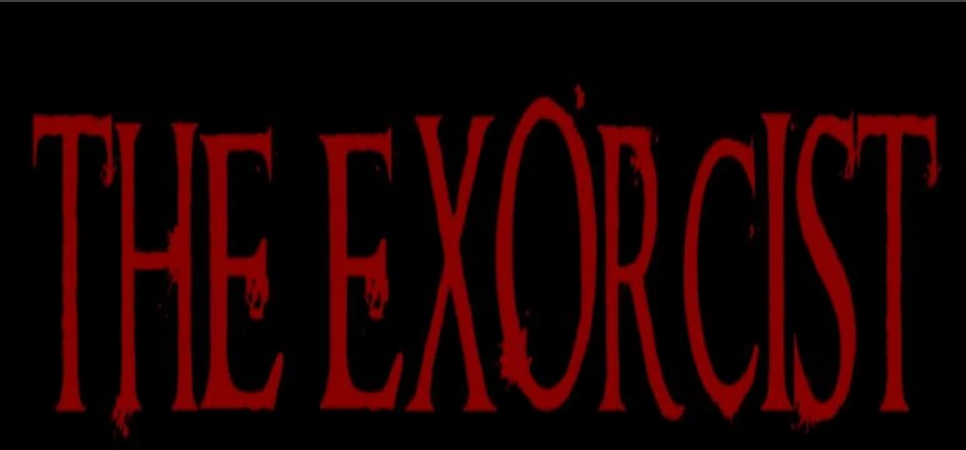
This serial column revisits The Exorcist television series. Conceived by Jeremy Slater for FOX and starring Ben Daniels, Alfonso Herrera, Geena Davis, and Alan Ruck, the show ran 2016-17 and was generally well-received by critics and audiences. DIS/MEMBER returns to the show in the context of a new Exorcist franchise film, seeking insight on what made the show work and why it’s lesser-known than its film counterparts. All screencaps sourced from Kiss Them Goodbye.
A moveable feast is a religious observance falling on a different day each year, an occurrence which must be continually computed–Easter is the most popular example. In The Exorcist episode four, “A Moveable Feast” is evil itself. Constantly at work in this world of possessions and holy warriors, recombining and replicating itself, evil is not something to be pinned down. It is not innocent and expected as Christmas, the twenty-fifth day of the twelfth month, forever. It requires Easter faith, attention paid to the signs, an awareness of what has changed in the preceding season and what is approaching.
This metaphor–perhaps thorny for viewers not raised in a Christian tradition–is seeded throughout episode four’s visuals. It’s particularly strong when Father Marcus dons his black hat and goes door-to-door, seeking the faithful and the knowing to bolster his cause. Marcus’s actions so far point to a Christmas faith; each exorcism he performs is dramatic, world-changing, and solo unto itself. He fights the demon one-to-one, and sometimes he loses, but the face is always one he recognizes.
Mother Bernadette’s faith is of the Easter variety. Everything about her abbey, her nuns, and the exorcisms they perform stands in contrast. Where we’ve seen Marcus in darkened rooms, sweat-soaked and shouting Latin commands, the nuns join themselves together in a ring, singing prayers in English. They beseech Mary, rather than God or even Christ. The arena of their efforts is a greenhouse, quiet and lush. Most striking, the possession plague is an open secret here, discussed by Bernadette as an everyday occurrence to be handled as the nuns handle food pantries and vespers.
She intimates that Marcus’s attitude is one born of ego. She challenges him to lay down his weapons and meet the demon with hers. In a vacuum, the Marcus-Bernadette tension might hit a sour note of gender essentialism: the violent, egoistic, solitary hero versus the gentle, humble, communitarian heroine. Within The Exorcist‘s world, however, the stakes are more personal. Marcus’s faith–his humanity, his soul–is up for grabs. Whether he will allow himself to be embraced by Father Tomas and other like minds or fall to the Adversary is a core question of the series.
His yearning for community is lampshaded earlier in “The Moveable Feast,” in a surprisingly lighthearted way, when he tags along on a Chicago murder tour called–naturally–The Movable Deceased. Afterward, he visits with the tour’s proprietors and is visibly relaxed when it becomes clear the pair speak his language. They’re aware of the Englewood murders and the organ thefts; they forecast a fault line in Chicago about to crack open, releasing a great evil; they even know about the vocare pulvare. Occult weirdos unite! It is egoistic to consider one’s weirdness unique. Marcus’s ego is his barrier and his blanket. If no one else can do what he does, then it’s imperative he continues to do that thing.
At the same time, Father Bennett has reminded Marcus that with excommunication comes a stripping of protections. The viewer understands that Bennett means legal protection, a place to live, and other material concerns. Marcus considers excommunication a spiritual stripping. He fears he’ll lose the only thing that made him worthy in the first place–the ability to cast out demons.
To Mother Bernadette, he even refers to himself not as a priest, but as an exorcist. In response, she invites him into the arena of the damned to try an exorcism her way.
At home, the Rance family eat take-out with an empty chair at the table. It’s both an obvious reminder of who’s missing–Casey–and an eerie tip to various empty-chair tales. A chair reserved for Elijah, a chair reserved for the Grail Knight: vacant space signifying a presence there and not-there, an eternal return, faith that the open air will be filled by its rightful occupant.
For now, however, Casey is occupying a bed in a hospital her mother doesn’t like. There’s some implied History on Angela’s part, deepening the mystery surrounding her character while also tying her more closely to her beset daughter. And Casey is beset. Her demon is now fully revealed, the neat suit torn to shreds, the mild face twisted in rage and baring filth-caked teeth. He crouches above her as she thrashes against the hospital restraints, calling to mind the famous Fuseli painting. She, in turn, is equally wrecked. Wounds cover her body, including genital trauma, which gives her parents horrified pause… and calls to the equally famous scene in the original Exorcist. Is it a little ironic that in this case, the instrument of mutilation-masturbation wasn’t a holy object (the crucifix), but a capitalist one (the curling iron)?
Yet for all Casey’s besieged body, the demon’s form is also revealing. He becomes ever more disgusting and tattered over the course of the episode. It isn’t just that he’s wearing her down, eroding her resistance. It seems that she is also wearing him down, through that very resistance. Watching the two of them, we the viewer hope that the demon’s becoming desperate. Where cajoling has failed, when threats don’t work, he attacks the people around Casey, including a nurse whose cross necklace swings as the demon chokes her. See what you made me do? he berates Casey. He tells her the power to end the nurse’s pain is hers, that all she has to do is say yes. He promises a release from pain, if she’ll only give in.
In a way, Casey’s scenes with the demon call to mind the choices often undergirding female Catholic saints. Permit yourself to be raped and live (as a fallen woman or wife to a barbarian); resist rape and die (but be sainted in death). As David Berman might have it, he threatens her with perfection.
The future perfection of Father Tomas’s soul is also at stake. The man is simply wilding out! He cashes the check from Maria Walters (Kirsten Fitzgerald); he receives a surprise visitor in the form of Jessica, lady of letters… and invites her to stay. Father Tomas is relatable as a character for many reasons–perhaps a bit startling, considering his vocation.
For me, someone whose personality is baseline “earnest rules-follower,” he hits especially hard. Tomas is a man whose life could be straightforward. He has the charisma-humility combination necessary for effective clergy, his higher-ups would be content to ignore him as long as he played it safe, and his youth, looks, and goodwill have won him allies in the money sector. Instead, he’s increasingly willing to throw it all away for the sake of a louche street priest faith. Even his attempts to become an exorcist are so adorably square. He’s shown studying the Rituale Romanum through a pair of reading glasses, seeking help from Catholic brass as though that would ever yield fruit, trying in good faith to play things by the book. If Marcus has a surfeit of ego, Tomas has learned too well to guard against ego. It’s clear something’s got to give.
Yet when Jessica appears, coaxing him toward crossing a line of propriety and vows with her, he turns his back. Yet when the Rances beseech him for help… when his mentor Marcus returns fresh from Mother Bernadette’s arena and bearing her death-metal crucifix… he leaps over a different line, a more profound one. It’s no accident that Jessica is framed beneath a huge cross over Tomas’s bed, nor that the entire series’ most iconic scene occurs in “A Moveable Feast.” The Church–its hidebound dogma and out-of-touch or possibly-demonic hierarchy–as signified by the crucifix may be abandoned. The church–its congregants and street clergy–as signified by the priestly collar are worth fighting for. A sin of the flesh may be forgiven simply and easily. A sin of the soul is a life-changing decision.
As a knight arms his squire for first combat, Marcus helps Tomas prepare to meet Casey’s demon. As the camera’s eye roves over the priests’ preparation, that demon takes flight.






![[ZINE] HOW BATTLE ROYALE HELPED ME GROW](https://www.dis-member.com/wp-content/uploads/2019/10/takako-chigusa-150x150.jpg)
![[LISTS] SHOCKTOBERFEST 2021 – HENENLOTTER WEEK!](https://www.dis-member.com/wp-content/uploads/2021/10/banner-1-150x150.png)
![[EDITORIAL] TWIN TALES OF TAGALOG TERROR, 2020 EDITION](https://www.dis-member.com/wp-content/uploads/2020/03/feature-150x150.jpg)


Average Rating